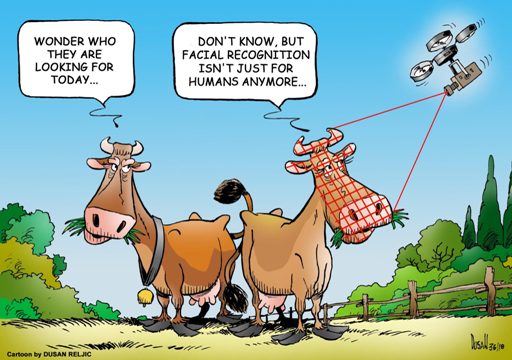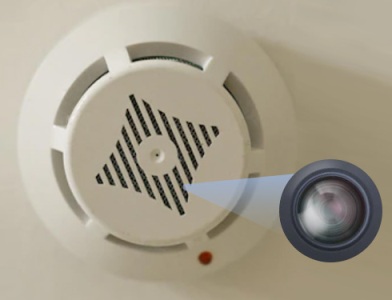 February 2023
February 2023
Are you concerned about facial recognition cameras watching your every move? Some large venues have been using it to enhance security. But not everyone has a benevolent intent or your best interest as their goal.
Take the case of Kelly Conlan, a New Jersey native on her way to see a Rockettes show at Radio City Music Hall. She was stopped by security who refused her access because the facial recognition had identified her as an attorney. The law firm where she works was involved in a personal injury litigation against a restaurant that is owned by MSG Entertainment. They also own the music hall and they had decided that all attorneys working for law firms involved in litigation against them are banned from attending events at any of their establishments until the litigation is resolved.

Not only was this a rather childish “hissy fit” on the part of MSG Entertainment but it showcases the kind of facial recognition “incidents” that are happening more frequently all across the country. It can, and sometimes does result in innocent people being targeted and harassed. They may not even know that they have been targeted and just assume they are having a run of bad luck.
Does facial recognition really work? Yes, the software identifies a number of points on the face then an AI algorithm creates a faceprint, sort of a unique “map” of that person’s face. It then compares that map to other such maps in the database looking for a match. Over the years the manufactures have developed a remarkable level of accuracy.
Other technologies have aided this development. Software that predicts what a young person would look like as an adult has helped find people who have been missing for many years. Facial recognition has advanced to the point where it is no longer limited to just humans.
SeaNet is facial recognition for harbor seals. It can detect a face in the picture, crop it and recognize the seals face. Another software known as PrimNet performs a similar function for primates. Researchers use this software to keep track of animals in the wild. There is even facial recognition for farm animals. Will a seal or ape filing a lawsuit against the researcher for invasion of privacy be the next big thing?
The National Institute of Standards and Technology, (NIST) developed Face Recognition Vendor Testing, (FRVT) in 2000. Since then, it has been available to any organization worldwide. In the last few years facial recognition has reached a point of being good, very good, so good it’s scarry.
In the early days facial recognition was prone to errors. Often these errors came from people not properly trained. It is said that the FBI alone has over five-hundred-million pictures of people and they probably have more than that. Even a very powerful computer will take a long time to perform a detailed search of that much data. To get around that problem they break it down into a series of searches.
The first search has rather loose parameters. For example, just look for a male child of a certain size, age and ethnicity. The search will be much quicker but return thousands of possibilities. For the second search the parameters are much tighter and the result is a much smaller list. The process is repeated and the parameters are tightened each time until a match is found.

The average person is on camera over one hundred times a day. Internet connected cameras are in stores, at intersections, just about everywhere, Facial recognition software like Rekognition, DeepFace and Azure Face are being used by companies and governments around the world. The usual reason is to improve security but it has gone way beyond that now.
In the US there is currently no federal law requiring signage to alert people that facial recognition is in use. However, many states and municipalities do have such laws and they can be rather complicated. The organization Ban Facial Recognition has a map of places that have restrictions on the use of facial recognition.
So, what can you do?
Is it possible to defeat facial recognition cameras and keep them from monitoring your every move? While there is nothing that is one-hundred percent effective there are a few things you can do.
- Alter your appearance to fool the facial recognition
- Detect the hidden cameras and avoid them.
Alter your appearance.
There is a new start-up company, (Cap_able) that manufactures a line of clothing with patterns based on algorithms that can defeat the facial recognition software. The system will either fail to make a complete identification or think that you are an animal like a dog because of the patterns imbedded in the clothing. It is effective between sixty and ninety percent of the time. Some of the clothing patterns may seem a little strange, even bizarre but given what some people are wearing these days it may fit right in.
Wear a hat, a scarf, sunglasses or other clothing that will obscure part of your face. This may not be appropriate in some venues. There is makeup that is designed to fool facial recognition. There are also glasses that can help fool facial recognition. Even a false moustache has been known to cause the facial recognition to fail to identify a person who was previously identified by that system.
Try and spot the cameras and stay out of their field of view. Avoid looking at or into the camera. These days it can be very hard to spot hidden cameras. Stay away from places that are known to use facial recognition. Of course, that only works if you know the area is being surveilled.
Detect hidden cameras.
If you are staying at a BnB, hotel or in a public place hidden cameras can be a threat to your privacy. Cameras can be made to look like common everyday items like clocks. smoke detectors, USB chargers and USB hubs. They can also be made very small and easy to conceal. The first step is to visually look for anything that seems out of place. Is there more than one smoke detector in the room? A USB hub with nothing attached to it or a USB charger with nothing plugged into it? The old “mark one eyeball” can, with a little training, be an effective tool.
There are commercially available camera detectors. They range in price from under one hundred dollars to several hundred dollars. But you may not need to go to such lengths.
You can check for hidden cameras with your smart phone. If you have access to the network you can use your smart phone to scan for other devices on that network. There are a number of free apps that will enable you to see connected devices. This will only work if the camera is on the same network. Look for devices with names like Arlo, Nest, Blink, Forex or listed as IP camera. Even if you don’t see an obvious camera make a note of the number of devices listed like printer, routers, access points and so on and see if you can find them,
If you do find something suspicious the next step is to do a port scan to see if there are any open ports and what services they are using. Look for things like RTSP or RTMP as these are commonly used for streaming. If you see something using HTTP or HTTPS you can try to connect to it with a browser. Type the IP address followed by a colon followed by the port listed, (i.e., 192.168.1.10:80).

Remember that this will only work if you have access to the network and the camera is on the same network. Hidden cameras may be on a separate network to help conceal their presence.
Even if you have found a hidden camera(s) the search might not be over. Night vision cameras often have infrared lights. While infrared light is not visible to the naked eye your smartphone may be able to see it. Some smartphone have an infrared filter on the main camera but very seldom do they have a filter on the front camera. To test this take an infrared remote like the one for your TV, point it at the camera and push a few button. If you see flashes on the screen, it is detecting the infrared light. If not try it again using the front facing camera.
To scan the room, turn off all the lights and get the room as dark as possible. Don’t just scan the center of the walls. Point your smart phone at the ceiling, air vents, potted plants even outlets. You don’t have to be very close for an infrared source to show up on your smart phone’s screen.
While you have the room darkened take a flashlight and pan around the room. Look for bright reflections for the lens of a hidden camera.
Also, don’t forget mirrors. A standard mirror isn’t a concern but a “one way” mirror could conceal a camera. If you touch a standard mirror and look at it from a slight angle the reflection of your finger doesn’t quite touch your real finger. There is a slight gap. If you do this on a one way mirror you reflected finger and your real finger will appear to touch.
Another trick is to just listen as you walk around the room. Some hidden cameras with motion detection will emit an almost inaudible buzz when they are operating. Also look for little colored lights. Many cameras have little LEDs that indicate when the device is operating.
What to do if you find a hidden camera? While hidden cameras by themselves may not be illegal invasion of privacy usually is.
- Take all your belonging out of the viewing angle of the camera.
- Take pictures of the camera for evidence.
- Call the police or other authorities to investigate the case.
- Do not move or touch the camera. You don’t want your fingerprints on it when the authorities arrive although you might want to carefully drape a towel or something over the camera to prevent further snooping until the authorities do arrive.
Unfortunately, there is no way to be one hundred percent certain there are no cameras hiding in your location. Hopefully these tips will tip the odds in your favor.
And remember — always back it up!